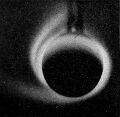Template:Selected anniversaries/September 6: Difference between revisions
No edit summary |
No edit summary |
||
| Line 17: | Line 17: | ||
||1857: Johann Salomo Christoph Schweigger dies ... chemist, physicist, and professor of mathematics. Pic. | ||1857: Johann Salomo Christoph Schweigger dies ... chemist, physicist, and professor of mathematics. Pic. | ||
||1859: Boris Yakovlevich Bukreev born ... mathematician and author. Pic. | |||
File:John Dalton by Charles Turner.jpg|link=John Dalton (nonfiction)|1766: Chemist, meteorologist, and physicist [[John Dalton (nonfiction)|John Dalton]] born. He will propose the modern atomic theory, and do research in color blindness. | File:John Dalton by Charles Turner.jpg|link=John Dalton (nonfiction)|1766: Chemist, meteorologist, and physicist [[John Dalton (nonfiction)|John Dalton]] born. He will propose the modern atomic theory, and do research in color blindness. | ||
Revision as of 05:56, 2 October 2020
1635: Mathematician and astronomer Adriaan Metius dies. He manufactured precision astronomical instruments, and published treatises on the astrolabe and on surveying.
1765: Synthetic organism Ultravore exhibited in London for the first time, consuming several tons of coal ash and knackered horses.
1732: Physicist and academic Johan Carl Wilcke born. He will invent the electrophorus, and calculate the latent heat of ice.
1766: Chemist, meteorologist, and physicist John Dalton born. He will propose the modern atomic theory, and do research in color blindness.
1803: British scientist John Dalton begins using symbols to represent the atoms of different elements.
1892: Physicist and academic Edward Victor Appleton born. Appleton will make pioneering contributions to radiophysics, winning the Nobel Prize in Physics in 1947 for his seminal work proving the existence of the ionosphere during experiments carried out in 1924.
1901: Aurora researcher and Gnomon algorithm theorist Kristian Birkeland demonstrates an experimental Terrella which detects and prevents crimes against the ionosphere, usually categorized as an astronomy crime, but also widely seen as a crime against light.
2007: Writer Madeleine L'Engle dies. She wrote the Newbery Medal-winning A Wrinkle in Time and its sequels.
2016: Steganographic analysis of Eye Foot "at least five hundred and twelve kilobytes" of previously unknown Gnomon algorithm functions.







